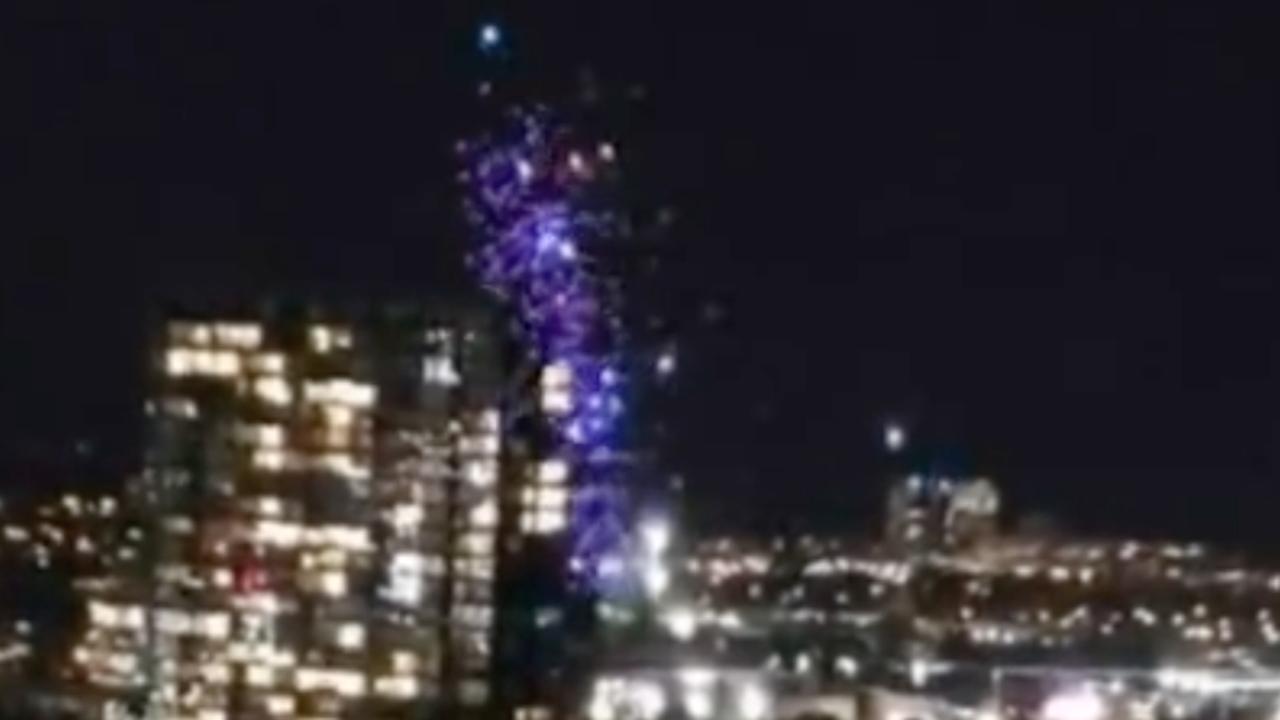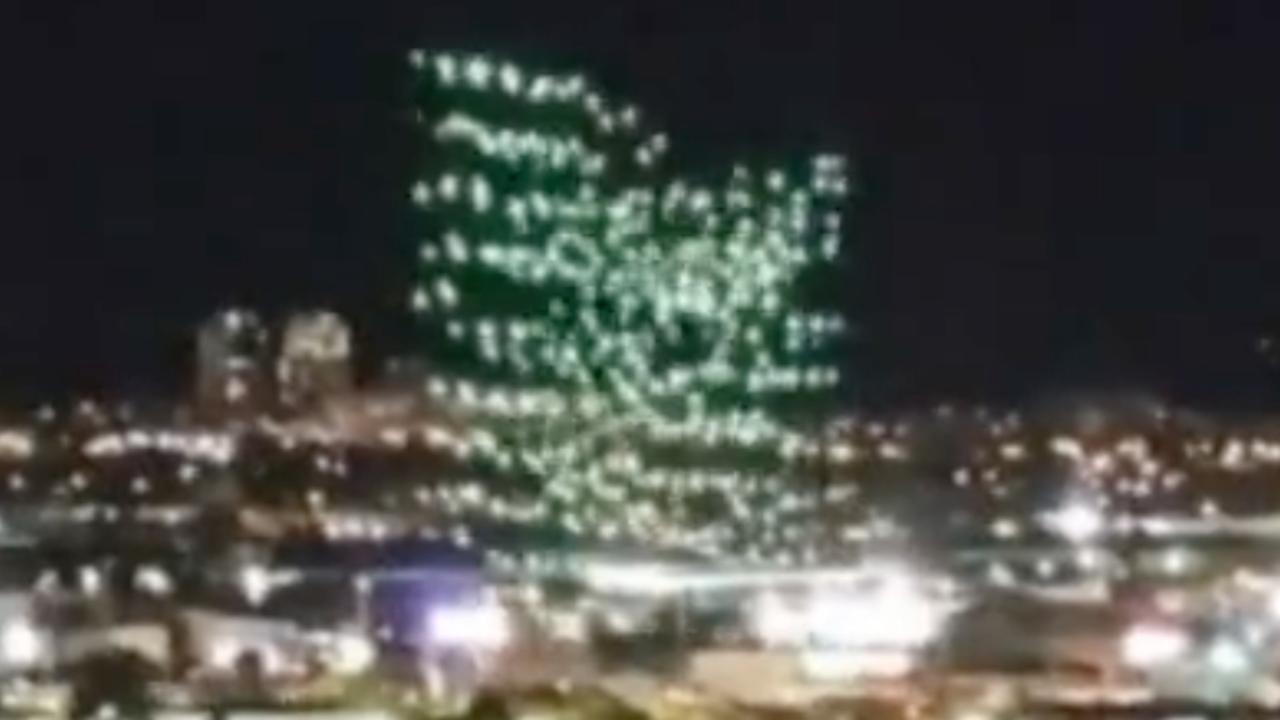Orlando drone show malfunction: A spectacular aerial display turned unexpectedly chaotic when a series of malfunctions disrupted a planned drone show, leaving spectators stunned and raising serious questions about safety protocols and technological reliability. This incident highlights the inherent risks associated with large-scale drone operations and underscores the need for robust safety measures and stringent regulatory oversight.
The incident, which unfolded rapidly, involved [Number] drones, resulting in [brief description of the malfunction, e.g., several drones losing control, colliding mid-air, or failing to perform programmed maneuvers]. Eyewitness accounts and video footage, where available, provide compelling evidence of the event’s unexpected and dramatic nature. The subsequent investigation into the incident’s root causes will undoubtedly inform future drone show planning and safety regulations.
The Orlando Drone Show Malfunction
The recent drone show malfunction in Orlando, Florida, served as a stark reminder of the potential risks associated with large-scale drone displays. While generally considered a spectacular form of entertainment, the incident highlighted critical areas needing improvement in safety protocols, technological reliability, and regulatory oversight.
The Orlando Drone Show Incident: A Detailed Account
The malfunction involved a significant portion of the drones participating in the scheduled show. Initial reports suggest a loss of communication between the control system and a substantial number of the drones, resulting in erratic flight patterns and ultimately, a premature termination of the show. The incident unfolded rapidly, leaving many attendees bewildered and concerned.
Eyewitness accounts describe a scene where numerous drones began to deviate from their programmed choreography. Some reportedly descended rapidly and erratically, while others drifted aimlessly. Available video footage, though limited in clear resolution, shows a chaotic dispersal of the drones across the sky, contrasting sharply with the synchronized display intended.
| Time | Event | Location | Impact |
|---|---|---|---|
| 8:15 PM | Show commences, initial phases proceed as planned. | Designated show area | Positive audience response |
| 8:27 PM | First signs of malfunction observed; several drones deviate from programmed flight path. | Central area of display | Minor audience concern |
| 8:30 PM | Significant number of drones malfunction; erratic flight patterns observed. | Entire display area | Audience concern escalates; show halted |
| 8:35 PM | Emergency services arrive on the scene; drones are grounded. | Entire display area | Show cancelled; potential for damage assessment. |
Technical Aspects of the Malfunction, Orlando drone show malfunction
Several potential technical causes for the malfunction are under investigation. These include software glitches within the central control system, hardware failures in individual drones (e.g., GPS module, communication receivers), and communication interference affecting the signal between the control system and the drones. The investigation will likely focus on analyzing flight data logs from the drones and the central control system to determine the root cause.
The drones involved were likely commercially available models, potentially utilizing GPS for positioning and radio frequency communication for control. Specific model details are pending official investigation reports. Safety protocols, including redundant communication systems and fail-safe mechanisms, were presumably in place; however, their effectiveness during the incident is being scrutinized.
A flowchart illustrating a possible sequence of events leading to the malfunction might include: (1) Initial signal transmission, (2) Signal interference or loss, (3) Fail-safe mechanisms activation (or lack thereof), (4) Erratic drone behavior, (5) Emergency shutdown protocols initiated (or not initiated).
Impact and Response
The malfunction resulted in the immediate cancellation of the drone show, leaving many attendees disappointed and some potentially concerned for their safety. Show organizers swiftly responded by halting the show and engaging emergency services to manage the situation. Initial reports indicate no injuries to spectators or damage to property, although a thorough assessment is underway.
- Orlando Incident: Widespread drone malfunction, show cancellation, no reported injuries.
- Similar Incident (Example): A drone show in [Location] experienced a similar loss of communication resulting in [outcome, e.g., minor damage to property].
- Another Example (Example): A show in [Location] faced a different type of malfunction due to [cause, e.g., a sudden weather change] resulting in [outcome, e.g., a delayed show].
Safety and Regulatory Implications

The incident underscores the need for robust safety regulations and protocols governing drone shows. Current regulations likely cover aspects such as airspace authorization, operator licensing, and emergency procedures. However, the Orlando incident suggests a need for stricter guidelines concerning redundancy in communication systems, fail-safe mechanisms, and real-time monitoring capabilities.
The recent Orlando drone show malfunction highlights the complexities of large-scale drone operations. Ensuring reliable performance requires meticulous planning and robust safety protocols, something clearly demonstrated by the sophisticated monitoring systems used in projects like the cobequid pass camera initiative. This incident underscores the need for continuous improvement in drone technology and operational strategies to prevent future malfunctions and maintain public safety.
| Safety Regulation | Potential Impact on Preventing Similar Incidents |
|---|---|
| Mandatory redundant communication systems | Reduces reliance on single points of failure, improving resilience against communication loss. |
| Real-time drone tracking and monitoring | Enables prompt detection of anomalies and facilitates timely intervention. |
| Stringent pre-show safety checks and simulations | Identifies and mitigates potential risks before the show commences. |
Public Perception and Media Coverage
Social media and news reports immediately following the incident reflected a mixture of surprise, concern, and amusement. Many shared videos and photos capturing the chaotic scene. Headlines varied, with some emphasizing the malfunction’s spectacular nature, while others highlighted safety concerns. Public statements from show organizers emphasized safety as a priority and promised a thorough investigation. The incident could potentially impact public trust in drone technology in the short term, though the long-term effects on the drone show industry remain to be seen.
The visual impact on the audience was initially one of confusion and then quickly transitioned to a sense of awe, as the uncontrolled drones created an unexpected, albeit unplanned, light show.
The Orlando drone show malfunction serves as a stark reminder of the potential for unforeseen complications in even the most meticulously planned technological events. While drone shows offer breathtaking spectacles, the incident emphasizes the crucial need for rigorous safety protocols, advanced technological redundancy, and proactive regulatory frameworks. A thorough investigation and subsequent implementation of improved safety measures are paramount to ensuring future drone shows prioritize public safety and maintain the public’s trust in this rapidly evolving technology.
FAQ Guide: Orlando Drone Show Malfunction
What type of drones were involved in the Orlando drone show malfunction?
This information will be detailed in the full report, but specifics on drone model and manufacturer are not yet publicly available.
Were there any injuries reported as a result of the malfunction?
The extent of any injuries, if any, will be included in the official report following a complete investigation.
The recent Orlando drone show malfunction, with its unexpected mid-air pauses and erratic movements, highlights the complexities of large-scale drone displays. This incident prompts reflection on the overall safety and technical proficiency required, contrasting perhaps with the seemingly smoother operations often seen in other shows, such as those detailed in this article about a florida drone show.
Ultimately, the Orlando malfunction underscores the need for continuous improvement in drone show technology and operational planning to prevent future disruptions.
What was the estimated cost of the damage caused by the malfunction?
A full financial assessment of the damage is pending the completion of the investigation.
What are the long-term implications for the drone show industry following this incident?
The Orlando drone show malfunction caused quite a stir, highlighting the complexities of large-scale aerial displays. It made me think of the seemingly flawless coordination required for something like the NORAD Santa Tracker, which you can contact via the norad santa tracker phone number if you’re curious. The contrast between the two events emphasizes the precision needed to avoid similar technical issues in future drone shows.
The incident will likely lead to increased scrutiny of safety regulations and protocols, potentially influencing future show designs and technological advancements.


